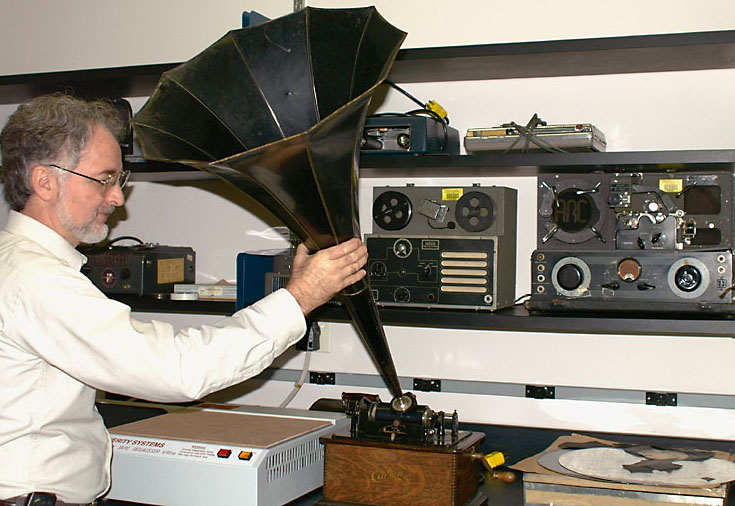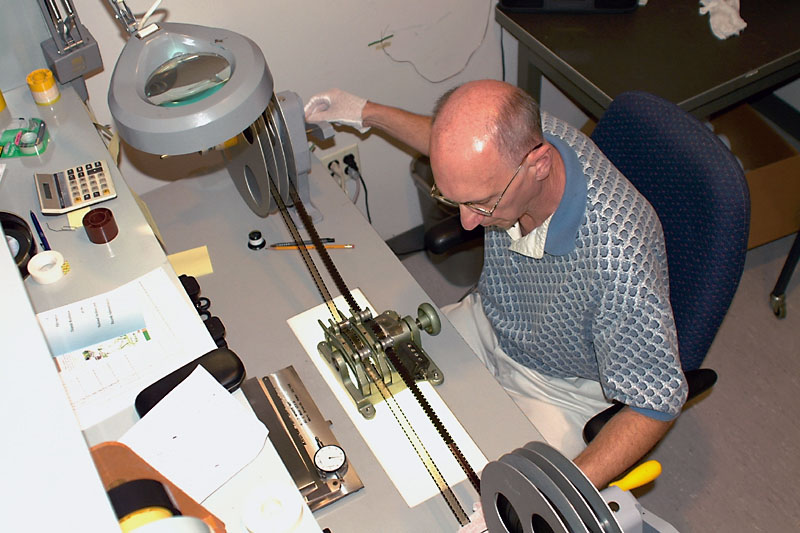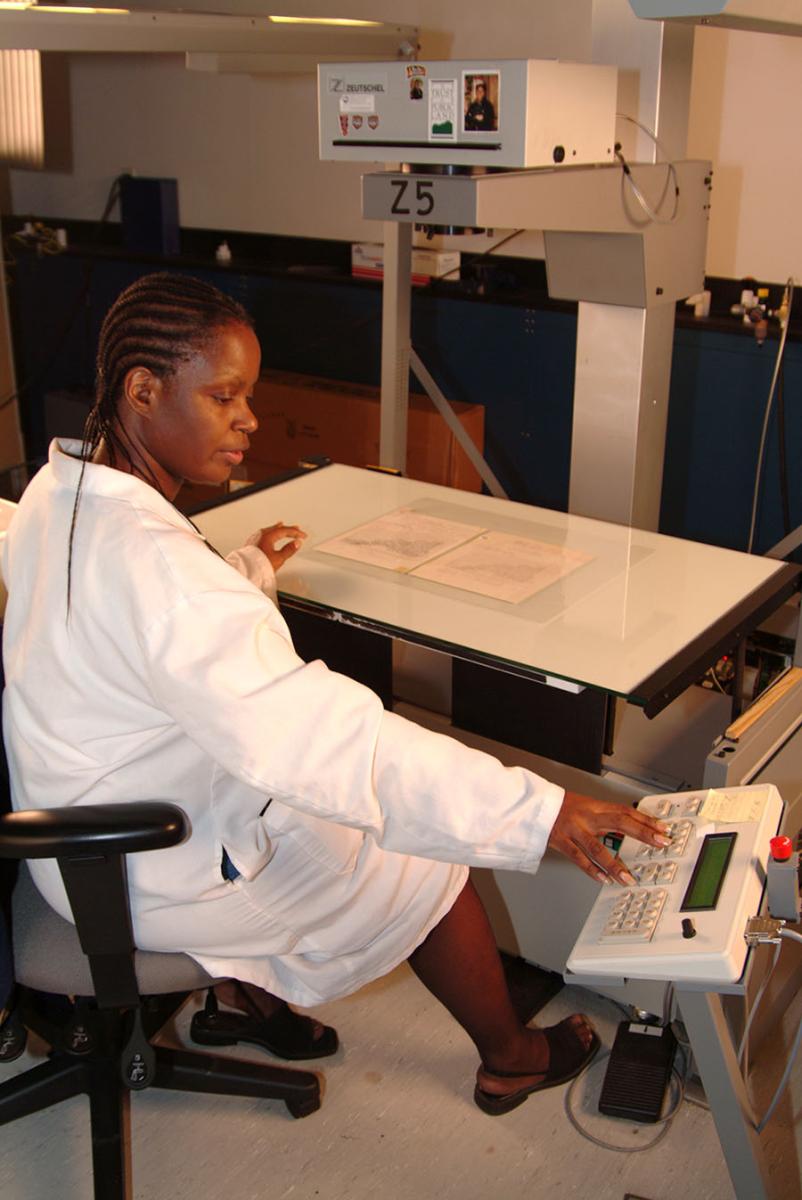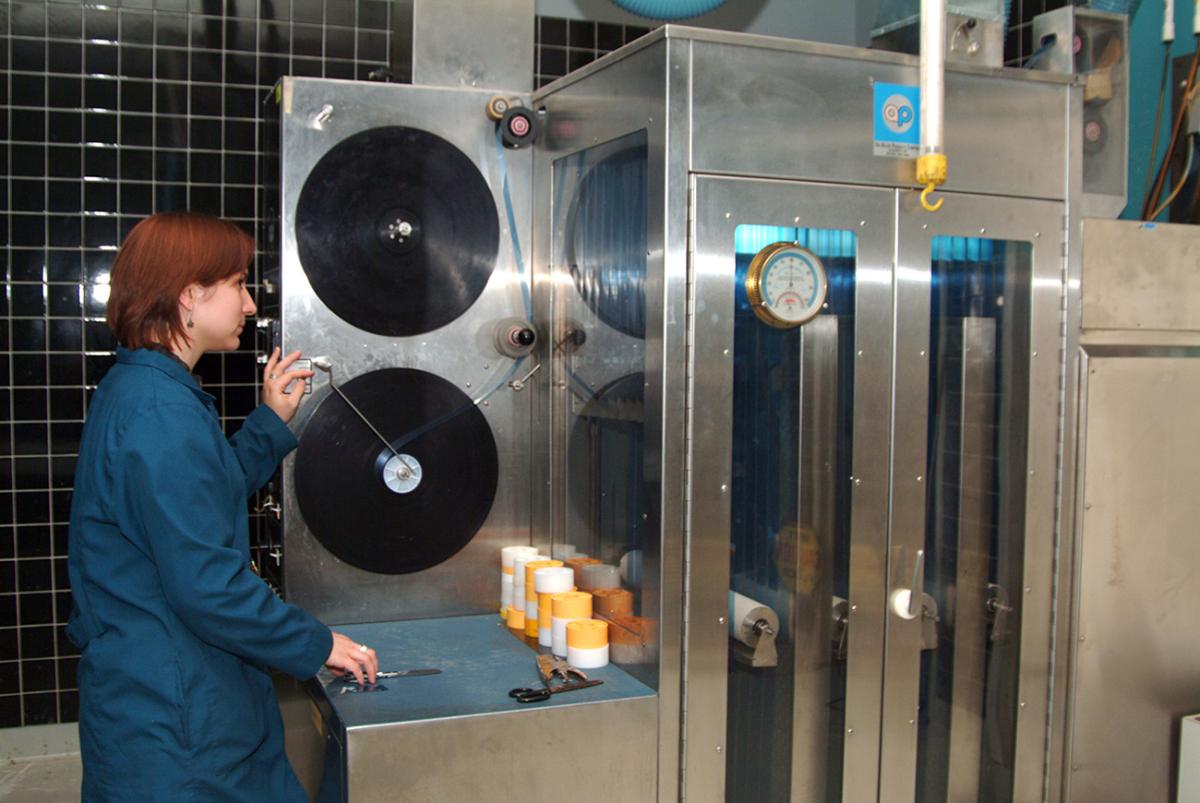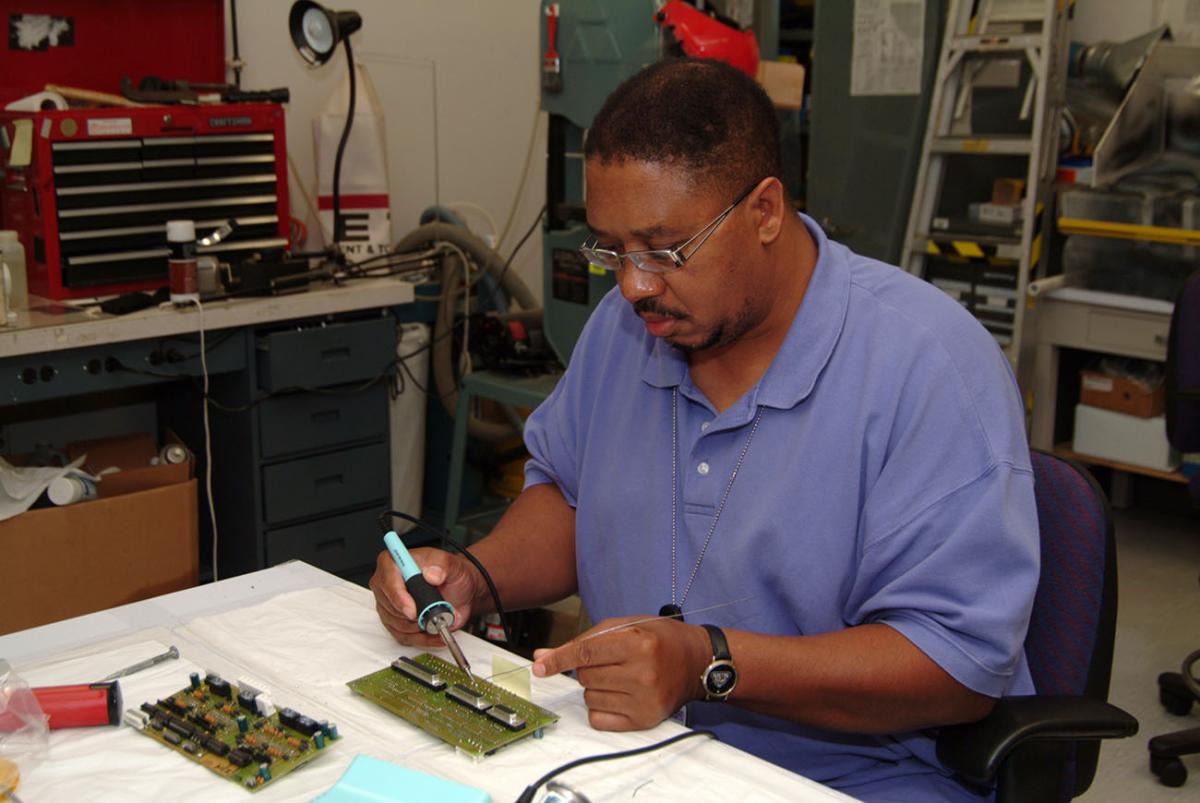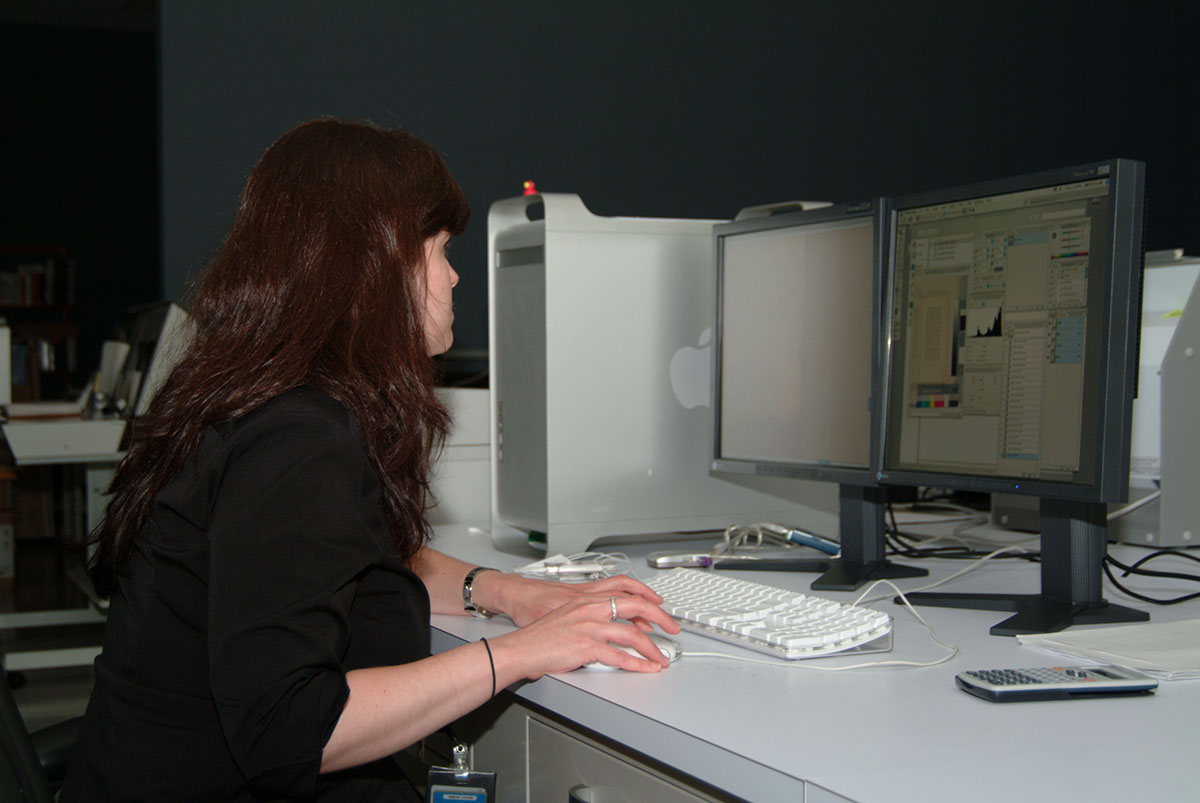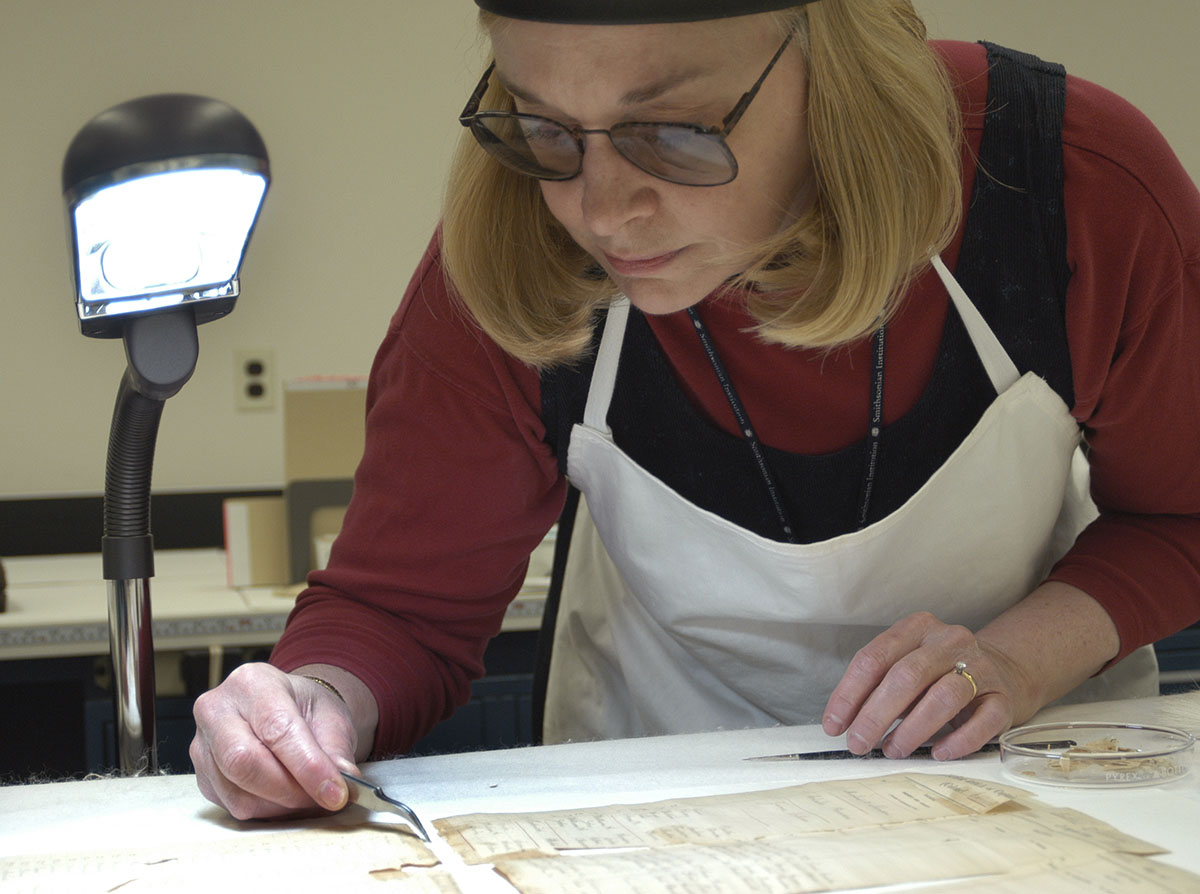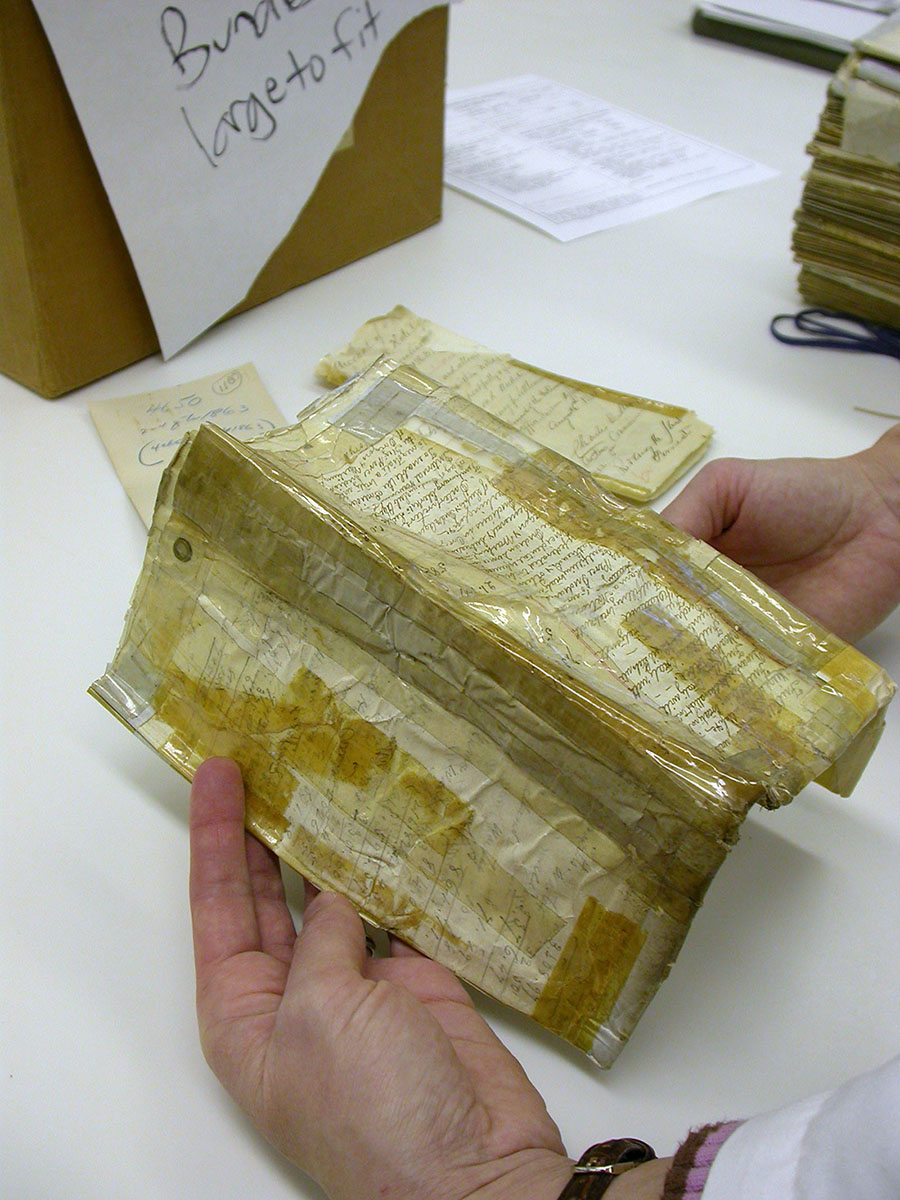
Preserving the Past, Keeping Pace with the Future
Fall 2007, Vol. 39, No. 3
By Mary C. Ryan
"Is this the real Declaration of Independence?" a child asks her parents. This question is echoed countless times in the National Archives, and not only about the Declaration, the most famous document on display in the National Archives Building in Washington, DC.
For the thousands who every day view exhibits and conduct research in archives facilities and presidential libraries across the country, the answer to the question is "yes, it's the real document." Whether you're a child on a first visit to the National Archives or a seasoned historian sorting through multiple boxes of government files, it is both exciting and comforting to know you are seeing the genuine article.
For more than 70 years the National Archives has been the official custodian of the records of our national government, and it is this agency's mission to ensure that the "real stuff" of history endures for future generations to see for themselves.
The Preservation Programs office manages the National Archives and Records Administration's effort to preserve federal records stored in NARA's 34 facilities—in the Washington, DC, area and in presidential libraries, regional archives, records centers, and affiliated archives across the country. In addition, preservation staff work with federal agencies and professional colleagues in archives, records preservation, and allied fields nationally and internationally.
"The first principle in meeting NARA's core mission to preserve the records is to prevent damage and to minimize and slow the deterioration of the records," says Doris Hamburg, director of Preservation Programs.
Because records and artifacts are made from a variety of materials and media, some are more stable than others. To slow deterioration and promote preservation, staff members from preservation and across the agency consider a variety of factors, including building design, temperature and relative humidity, handling practices, and storage systems. Preservation staff address the particular problems of damaged records by applying their specialized expertise in conservation treatment, housing, and reformatting.
"We have an expert preservation staff who are very dedicated in their efforts to ensure that the historical record is preserved so that NARA is able provide access to the records today and in the future," says Hamburg.
Recent agency-wide surveys revealed that about two-thirds of all textual records—approximately two million cubic feet of records—need some sort of preservation attention—a daunting task, given the vast size of NARA's holdings. "This is a job that must be handled as efficiently and effectively as possible," says Hamburg. "This is the challenge."
Staffs in the archival units and Preservation Programs together establish annual and long-range preservation plans through risk assessments and surveys. Annually they identify which records need attention and the level of care that will be required. Some procedures may be as simple as reboxing documents, while other records require unfolding; others may involve treatment to humidify and flatten tightly rolled documents or repairs so that the records can be handled safely. Still other records may be copied onto microfilm or digital media to reduce handling of the originals and allow for wider distribution.
Many, if not most, records benefit from cool and dry storage. Color film for still and motion pictures and acetate film, in particular, are moved to storage at low temperatures, even below freezing, to slow deterioration.
NARA's preservation goal is to minimize the risk to our records, monitor their condition, and intervene when necessary. The "first line" of preservation is the proper environment for the records. The Preservation Programs office sets standards and reviews plans and systems for buildings and storage conditions in all NARA facilities.The standards include specifications for appropriate temperature and relative humidity ranges, lighting levels, shelving, and containers. Preservation staff also address aspects of a building that the average person may not consider—including hidden dangers to records in wall paint, flooring, adhesives, sealants, fasteners, and other housings for the records, large and small. Some materials emit gasses that are harmful to the records. Sorting out the harmful from the benign at the start gives the records the best chance for survival.
Because NARA's research and testing laboratory shares its findings on the web and in response to correspondence, these investigations also benefit other archival institutions that do not have the expertise to conduct their own tests.
How much a record is used is one important determinant of its treatment. For example, census records and Revolutionary War pension files are heavily used by a large number of researchers. Those records were photographed onto microfilm so that researchers could have easy access to them in multiple locations and the fragile originals could be stored and handled minimally.
NARA's microfilming program has made millions of records available to the public while protecting the originals records from harm. The polyester microfilm is sturdy, lasts up to 500 years, and is easily reproduced. One advantage of microfilm (and any type of silver-based image film) is that with the aid of a magnifying glass, one will always be able read the information captured on the microfilm, without the need for additional equipment.
NARA recently completed a very large project that involved both archival and preservation staff: the microfilming of the records of the Freedmen's Bureau field offices. These records are an invaluable resource for studying the history of African Americans during and immediately following the Civil War. Many of the loose sheets and bound volumes were in fragile condition, and because they had not been copied, researchers could consult the records only in the National Archives Building in Washington, DC.
A team of NARA volunteers—the Civil War Conservation Corps—reviewed all of the records to be filmed; conservation staff performed treatment where necessary; microfilm operators filmed each document frame by frame; and film processors created master and duplicate rolls. Now there are more than 1,100 rolls of readily available film in 14 NARA facilities across the United States, and the original documents are safely preserved for future generations.
While microfilming is a tried-and-true method of preservation, today the special media preservation laboratory increasingly uses digital methods of reformatting. Digital records give the researcher the advantage of being able to call up a single document through a search engine.
For audio recordings—which face problems of the tape flaking and becoming sticky due to media degradation—the only feasible means of preservation at this time is reformatting onto digital media. Because quarter-inch audiotape is no longer available in the quantities necessary for preservation reformatting, sound recordings are being digitized. Videotapes are now copied onto digital tapes, but as digital storage capacity increases, we will move to digital file formats. When that occurs, the audiovisual preservation laboratory will produce 1.5 terabytes of data a day.
The preservation specialists who work with audio, video, and film face another significant challenge: obsolete formats and equipment. Videocassettes have been replaced by DVDs. The 8mm movies or slides, along with their projectors, used by our parents or grandparents are no longer manufactured. National Archives staff faces the same challenges as the public, but on a much larger scale.
The shelves of the audiovisual laboratory hold a diverse assortment of superseded equipment. An Edison cylinder player rests near a Dictabelt machine, which is next to a reel-to-reel tape machine. A digital Betacam video tape recorder sits alongside a VHS video tape recorder.
In the motion picture preservation laboratory, film processing and duplicating equipment is kept running with ingenuity and skill. The special media preservation laboratories handle their own equipment maintenance and must be creative in solving problems when they cannot obtain parts or there is no longer a qualified technician available. Often equipment has to be modified and systems built to capture information from highly specialized and obsolete record formats such as the embossed film used for the Nuremburg trials.
Motion picture preservation is still film-based. Acetate film becomes brittle and curls as it ages, and the dyes in color motion picture film shift over time. Motion picture film identified for preservation treatment is copied onto polyester film, and the originals are retired to off-site cold storage. Copying a 1,000-foot reel of film to new stock takes approximately six to eight hours, depending on the condition of the original film. This includes inspection, repairs, rehousing, color correction (timing), cleaning, printing, developing (processing), and quality control steps. An hour of good quality audiotape may require an hour and a half to two hours to create a preservation file. Creating a preservation copy of 15 minutes of an original recording in poor condition may require many more hours of work.
In 1997 the National Archives made its first foray into digitally scanning items from our holdings and making them publicly available. The Electronic Access Project digitized 124,000 items—including textual documents, photographs, posters and artwork, and maps and architectural drawings—which are now accessible through NARA's online Archival Research Catalog (ARC).
When paper documents are inherently awkward to handle because of their size or become too fragile to use, staff photographers may copy them so that researchers can handle the reproductions in place of the originals. Photographs of oversized documents like maps, architectural drawings, and posters are made with cameras on large structures that can fill a room. The document is positioned at one end, and the camera can either travel along a track to shoot the entire image or focus on a portion of the record. The digital imaging and photography laboratories are constantly increasing the number of documents they are digitizing—for preservation and for ARC as well as for exhibits, publications, the web, and special projects. The Preservation Programs staff members also use their photography expertise to document NARA's work through the pictures they take of the agency's people and special events.
Before any record is photographed, scanned, microfilmed, or displayed in an exhibit, it receives a review and any necessary treatments in the document conservation laboratory. Here conservators assess condition, repair torn documents, flatten photographs, rebind books, and perform a variety of other conservation measures to help assure that records are sufficiently stable to withstand the intended use and handling.
Conservators carefully examine the object and note its materials and existing condition before deciding on a treatment. Treatment might include surface cleaning (to remove dirt that obscures the text or image); mending tears with long-fibered Japanese tissue and wheat starch paste; adhering lifting emulsion on a significant photographic print; or re-sewing a heavily used regimental volume.
As treatment progresses, conservators document their work. If a record needs attention in the years ahead, future NARA conservators will know exactly what was done to it and will be able to use that information to determine what additional treatment may be needed. The conservators and research scientists also utilize their expertise and analysis of materials and media to assist archivists and researchers in understanding the history of documents.
Staff members from every part of NARA's Preservation Programs promote the long-term protection of all records in the National Archives through training and education on a variety of topics, including handling. At its broadest level, NARA's preservation mission is carried out by every staff member in safely handling the records whenever they are used. As signs in the research rooms remind everyone, researchers, too, have a role in preserving the records by handling them correctly.
An important and critical part of NARA's Preservation Programs is emergency preparedness and recovery, in particular for the records. The most careful protection through secure storage cannot completely protect all records from being damaged when there is a natural disaster or a building system fails. Each facility has a records emergency management team in place. Should records be endangered by a flood, for example, NARA staff would set in motion a rapid response, using guidance and training provided by the Preservation Programs staff.
The educational mission reaches beyond the National Archives to professionals in the archival and preservation fields at large. Since 1987, NARA has sponsored a preservation conference with a different theme each year. In 2007 the conference explored digital reformatting as a preservation methodology at a program level. Past conferences have focused on the environment, research in preservation, conservation treatments, and exhibition-related issues.
Preservation staff members offer sessions at the twice-yearly Modern Archives Institute, a two-week course in archival practices. Staff also lecture, teach, and publish on a variety of preservation topics to both professional and lay audiences. They are active in standards-setting organizations as well.
As a national leader in the preservation field, NARA responds to requests for expertise, assistance, and information from federal agencies and institutions. In 2003, NARA Preservation Programs staff members responded to a request from the White House to assess the condition of records in Baghdad, Iraq, damaged during the war. After Hurricanes Katrina and Rita hurtled through Louisiana, Mississippi, Alabama, and Texas in 2005, NARA staff, including members of the document conservation laboratory, traveled to the Gulf Coast to offer advice and assistance on records recovery.
In 2004 the American Institute for Conservation and Heritage Preservation honored the National Archives for its preservation work with the Award for Outstanding Commitment to the Preservation and Care of Collections. In making the award, the committee wrote: "NARA has been on the cutting edge of preservation and conservation technologies. The committee commends the agency for going beyond its mandate as well as for its forward thinking and its contributions to the field through sharing results of its research and providing venues for communication and discussion."
Every day, NARA staff care for the records in our custody, wherever they are and in whatever format. Our mission to safeguard the records now and for the future requires us to always consider the balance between access and the physical safety and security of the documents. Some unique documents, such as the Emancipation Proclamation, may be publicly exhibited for only a few days a year in order to protect them from light damage. Other records may be photographed onto microfilm or reformatted onto digital media. Still others may be kept in cold storage until a researcher requests them.
In the end, though, whether you look at a document in a NARA research room, in an exhibit hall, on microfilm, or on a computer terminal, you can be assured it's the real thing. Our commitment to continuing preservation and access to the records will assure the child visiting the Rotunda today that the documentation of our national history will be there for her descendants as well.
